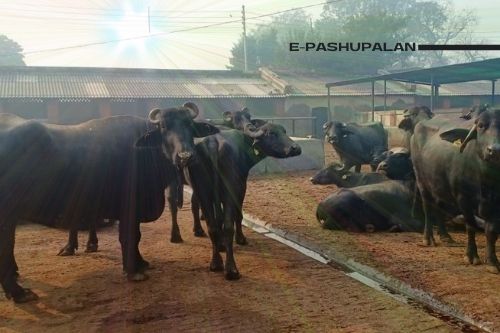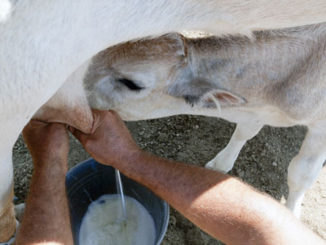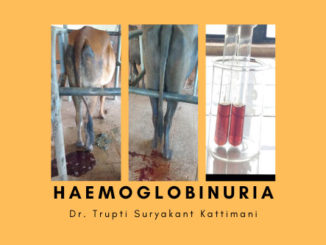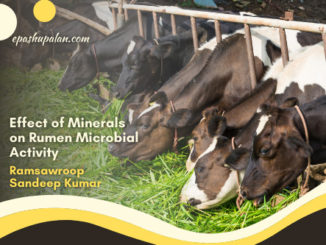Introduction
Buffalo (Bubalus bubalis) is produces milk, meat and utilized as source of power, fuel and leather production and known as the world’s second most important mulch animal because it shares more than 95% of the milk produced in South Asia (Javaid et al., 2009). The Buffalo population in India is 108.7 million and contributes around 21.23% of the total livestock population in India. India is a tropical country with hot and humid summer and relatively less stressful winter season. During summer (May-June), the atmospheric temperature goes as high as 45° C during day time and 30°C during night and photoperiod extends up to 12-14 hours. Environmental temperature at which an animal’s body is at equilibrium i.e., neither gain or lose heat is called Thermo Neutral Zone (TNZ). Heat stress is temperature related stress, which induces thermoregulatory changes. During the extreme hot humid or hot dry weather, this thermoregulatory capability of buffalo to dissipate heat by sweating and panting is compromised and heat stress occurs. Heat stress is a major problem faced by dairy animals during summer months which leads to decreased milk production and lower rates of fertility.
Susceptible animals
Though indigenous breeds of cattle are more thermo-tolerant, crossbred and exotic breeds of cattle are highly sensitive to heat stress. Buffaloes are more vulnerable to heat stress at high ambient temperature due to less number of sweat glands and black coat color leading to loss in their productive efficiency (Upadhyay et al., 2008).Exposure of buffaloes to the hot conditions causes a series of changes in the biological functions that include decrease in feed intake, efficiency and utilization, disturbances in metabolism of water, protein, energy and mineral balances, enzymatic reactions, hormonal secretions and blood metabolites. Such changes result in impairment of reproduction and productive performances (Das et al., 2014).

Natural defense mechanism towards heat stress
Characteristic black skin that contains numerous melanin granules, which provide protection against UV rays component of sunlight. UV rays are abnormally high in the typical hot climates of the tropics. Buffalo dermis has well-developed sebaceous glands and their oily secretions make skin slippery for water and mud. The oil secretions from skin make it more lustrous during summer to reflect solar radiations more effectively.
How to recognize heat stress
- Common symptoms of heat-stressed animal include
- Animal moves to shade, Water intake enhanced while feed intake reduced
- Prefers standing than lying down, Increased respiration rate, body temperature
- Increased production of saliva, Open-mouth panting, Rapid and weak pulse, Rapid but shallow breathing
- Abnormal vital parameters: Elevated heart rate, respiration rate, rectal temperature etc.
- Unusual salivation, Dizziness / unconsciousness, Skin becomes dull and may be cold too
- In case of heat stroke, body temperature is very high– sometimes as high as 106 – 108°F.
Causes for Heat Stress
Heat stress occurs when any combination of environmental conditions cause the effective temperature of the environment to be higher than the animal’s thermo neutral (comfort) zone. Four environmental factors influence effective temperature:
- Atmospheric temperature, Relative humidity
- Air movement, Solar radiation
Management of heat stress
Cooling systems in the farm/ Modification of the micro-environment
Evaporative Cooling: For this, various cooling systems have been developed such as holding-pen cooling, exit-lane cooling, and free-stall cooling. These systems are applicable for the animals maintained in covered pucca sheds. An evaporative system which uses water mist with fan is more effective and economizes water use in comparison to repeatedly bathing the animals. Some farmers prefer sprinklers or mister, installed on the roof or at various places in the barn. The use of a combination of evaporation and air movement such as ‘mist fans’ are more effective, economical and useful than fans and wetting alone. Water sprinklers generate a large volume of wastewater.
Feeding strategies in hot environment
There are several key areas of nutritional management which should be considered during hot weather. These include special formulation to account for reduced dry matter intake with corresponding greater availability of key nutrients and to compensate for dietary heat increment while avoiding nutrient excesses. The energy requirements of lactating buffaloes also increase under high-temperature conditions, but this increase is apparently caused primarily by the increase in metabolic energy.
Water intake: Water is the most important nutrient for buffalo during hot climate. Water intake is closely related to dry matter intake and milk yield, but regardless of the rate of increase, it is important that abundant water must be available at all times under hot conditions. Hot weather, declining dry matter intake and high lactation demand require increased dietary mineral concentration. The primary cation in bovine sweat is potassium. Sharp increases in the secretion of potassium through sweat occur during hot climatic conditions Alterations in mineral metabolism also affect the electrolyte status of buffalo during hot weather. So it important to supplement minerals during hot climate.
Night Grazing: Buffaloes kept in a shed maintain rapid heartbeat during the night. However, when the animals are allowed out into a pasture at night, these physiological responses decrease immediately. This is the result, both of a reduction in radiation heat from the surrounding buffaloes, as well as increased heat loss from the animal itself.
Feeding High-Energy Diets: Low-fibre, high fermentable carbohydrate diets lower dietary heat increment compared to high fiber diets. Although the metabolic energy of dairy buffaloes increases in a hot environment, heat stress depresses feed intake. For this reason, it is important to increase the energy content of the diet of dairy buffaloes, in order to maintain their energy intake under hot conditions. The heat increment, which is an internal heat stressor in hot environments, is lower in highly metabolizable diets. So it is imperative to use fatty feeds, or calcium salts of fatty acids, as the means of improving energy supply for buffaloes in summer. Buffaloes fed on such diets have higher milk yield, and a lower body temperature and respiration rate.
Feeding by-Pass Protein: Dietary protein degradability is also critical under heat stress conditions. It is well known that excessive protein intake increases heat production and decreases reproductive performance. However, the protein requirement of buffalo increases and dry matter intake decreases in a hot environment, consequently, the protein supplied to lactating buffaloes during summer is not always sufficient. By using fish meal, which is a by-pass protein, the milk yield and protein content of buffalo milk increases but the ruminal ammonia production decreases.
Increase potassium in rations: Potassium is the main mineral in sweat and as temperatures rise, cows lose more potassium through sweating, panting and urination. Beyond the potassium lost during normal milk production, this nutrient becomes even more critical in hot weather. Ensure your herd receives a high-quality potassium source that is protected from overheating to raise potassium levels to 1.7% of ration dry matter and ration DCAD to +35 to +45 meq/100g ration dry matter and maintain DMI, while meeting increasing nutrient demands.
Ensure increased mineral supplementation during hot weather to meet the increased demand of minerals. Potassium rich mineral mixture should be preferred.
Providing natural or artificial shade area
Provision of artificial shade area by shade cloth or a naturally well ventilated structure with open sidewalls can keep the animals away from direct solar radiation.
Planting Trees
Planting trees around the shed will provide shade and protects from direct sunlight. This is a very cheap solution but takes time to produce results.
Installing Fans
Depending on the design of the shed, either a ceiling fan or an oscilating fan can be installed.
Sprinklers and Foggers
Sprinklers are installed on the roof to sprinkle water and foggers/misters are installed inside the shed to produce fine drops of water.
Conclusion
In hot-humid climates, although dairy animal attempts to acclimatize through physiological changes including cutting down on feed intake and heat production, this does not come without sacrificing part of its productivity. In order to prevent this economic loss to the farmer, there is need to understand and effectively combat heat stress by minimizing its impact on the animal body and its productivity.
References
- Managing Reproduction during Times of Heat Stress, ABS Global Technical Services Newsletter
- Rensis, Fabio D. and Rex.J. Scaramuzzi. 2003. Heat stress and seasonal effects on reproduction in the dairy cow—a review. Theriogenology 60:1139-1151.
- Buffalo under Heat Stress, AK Balhara, Jerome A and Inderjeet Singh. Central Institute for Research on Buffaloes, Indian Council of Agricultural Research.






2 Trackbacks / Pingbacks